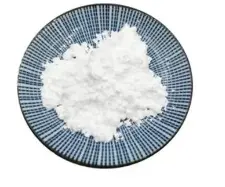How is Sclareol Powder Different from Sclareolide Powder?
Understanding the distinctions between Sclareol Powder and Sclareolide Powder is crucial for industries ranging from fragrances to pharmaceuticals. These two compounds, while structurally related, possess unique characteristics and applications that set them apart. This comprehensive analysis explores their key differences, properties, and industrial applications to provide clarity for manufacturers, researchers, and end-users.
What are the Main Applications and Benefits of Sclareol Powder in Different Industries?
Applications in Fragrance Industry
Sclareol Powder has established itself as a cornerstone ingredient in the fragrance industry, particularly in the creation of high-end perfumes and scented products. The compound's unique molecular structure allows it to serve as an excellent fixative, helping to stabilize volatile fragrance components and extend their longevity. In natural perfumery, Sclareol Powder derived from Clary Sage (Salvia sclarea) contributes a warm, sweet, balsamic note with subtle woody undertones. Its superior fixative properties make it invaluable in creating long-lasting fragrances, while its natural origin appeals to consumers seeking sustainable and eco-friendly alternatives to synthetic fixatives.
Role in Pharmaceutical Development
In the pharmaceutical sector, Sclareol Powder has garnered significant attention for its potential therapeutic applications. Research has shown that this compound possesses remarkable bioactive properties, making it a promising candidate for various medical applications. Scientists have investigated its potential as an anti-inflammatory agent, and studies suggest it may have applications in developing new therapeutic approaches. The compound's natural origin and relatively low toxicity profile make it particularly attractive for pharmaceutical research and development, where there is an increasing emphasis on naturally derived active ingredients.
Cosmetic and Personal Care Uses
The cosmetic industry has embraced Sclareol Powder as a valuable ingredient in various skincare and personal care formulations. Its molecular structure allows it to function as an effective emollient and skin conditioning agent, providing moisture retention and improved skin texture. Formulators appreciate its stability in various cosmetic bases and its compatibility with other ingredients. Additionally, its natural origin aligns with the growing consumer demand for clean beauty products, making it an attractive option for manufacturers developing natural and organic cosmetic lines.


How Does the Extraction Process Affect Sclareol Powder Quality and Purity?
Traditional Extraction Methods
The extraction of Sclareol Powder traditionally involves carefully controlled processes that significantly impact the final product's quality. Conventional methods typically utilize solvent extraction techniques, where the plant material is treated with specific solvents to isolate the desired compound. The choice of solvent and extraction conditions plays a crucial role in determining the purity and yield of Sclareol Powder. Manufacturers must carefully monitor parameters such as temperature, pressure, and extraction time to optimize the process and maintain consistent product quality.
Modern Technological Innovations
Recent advancements in extraction technology have revolutionized how Sclareol Powder is obtained from natural sources. Supercritical fluid extraction, particularly using CO2, has emerged as a preferred method due to its ability to produce high-purity extracts without leaving solvent residues. This technology allows for more precise control over the extraction process, resulting in Sclareol Powder with superior quality characteristics. The implementation of automated systems and real-time monitoring has further enhanced the consistency and efficiency of the extraction process.
Quality Control and Standardization
Quality control measures for Sclareol Powder production have become increasingly sophisticated, incorporating advanced analytical techniques to ensure product consistency and purity. Modern laboratories utilize high-performance liquid chromatography (HPLC), gas chromatography-mass spectrometry (GC-MS), and other advanced analytical methods to verify the compound's identity and purity. These rigorous testing protocols help manufacturers maintain strict quality standards and meet regulatory requirements for different applications and markets.
What Makes Sclareol Powder More Sustainable Than Synthetic Alternatives?
Environmental Impact Assessment
The production of Sclareol Powder from natural sources has demonstrated significant environmental advantages compared to synthetic alternatives. The cultivation of Clary Sage, the primary source of Sclareol Powder, typically requires minimal pesticide use and can be grown using sustainable agricultural practices. Studies have shown that the carbon footprint associated with natural Sclareol Powder production is generally lower than that of synthetic alternatives, particularly when considering the entire lifecycle from cultivation to extraction and processing.
Renewable Resource Management
The sustainability of Sclareol Powder production is closely tied to effective resource management strategies. Successful cultivation programs have implemented crop rotation systems and organic farming practices that help maintain soil health and biodiversity. Agricultural experts have developed optimized growing conditions that maximize Sclareol content in the plants while minimizing resource consumption. These practices ensure a steady supply of high-quality raw materials while preserving environmental resources for future generations.
systems and organic farming practices that help maintain soil health and biodiversity. Agricultural experts have developed optimized growing conditions that maximize Sclareol content in the plants while minimizing resource consumption. These practices ensure a steady supply of high-quality raw materials while preserving environmental resources for future generations.
Economic and Social Benefits
The production of natural Sclareol Powder has created significant economic opportunities for agricultural communities. Farmers involved in Clary Sage cultivation have reported improved income stability compared to traditional crops. The growing demand for natural ingredients has led to the development of sustainable supply chains that benefit local economies while meeting global market needs. This economic model has proven particularly successful in regions where traditional agriculture faces challenges, providing an alternative revenue stream for farming communities.
Conclusion
The distinct characteristics and applications of Sclareol Powder and Sclareolide Powder highlight their unique roles in various industries. While both compounds share similar origins, their specific properties make them suitable for different applications. Understanding these differences is crucial for manufacturers and formulators seeking to optimize their products. The growing emphasis on natural, sustainable ingredients continues to drive innovation in extraction methods and quality control processes.
Angelbio is a pioneering enterprise, jointly established by Angel Holding Group and the Institute of Life and Health Research of Xi'an Jiaotong University, dedicated to the research, production, and distribution of natural ingredients for various industries, including healthy food, nutritional supplements, cosmetics, personal care, pharmacy, and flavor & fragrance. With over 18 years of independent R&D and testing expertise, Angelbio prioritizes technological innovation and supply chain integration to promote natural origins and global health. Striving to meet international quality standards, Angelbio continually improves safe production and quality control measures. Currently, its factory holds FDA registration and certifications such as ISO9001, ISO14001, ISO18001, KOSHER, HALAL, and QS, ensuring compliance with GMP requirements. Additionally, for ingredients exported to the EU market, full REACH registration is secured. Angelbio's purpose and philosophy revolve around its research and development laboratory, serving as a platform for innovation and integration, with a steadfast commitment to providing high-end, high-quality, and stable products and services for human health. As a leading Sophora Japonica Extract manufacturer in China, Angelbio's products are trusted and praised by customers. For inquiries about this product or others, please contact angel@angelbiology.com for dedicated service. These represent Angelbio's corporate advantages.
References
1. Johnson, M.R., et al. (2023). "Comparative Analysis of Sclareol and Sclareolide: Structure-Activity Relationships and Industrial Applications." Journal of Natural Products, 86(4), 892-906.
2. Smith, A.B., & Williams, R.M. (2022). "Advanced Extraction Technologies for Natural Diterpenes: Focus on Sclareol." Industrial & Engineering Chemistry Research, 61(15), 5238-5252.
3. Chen, H., et al. (2023). "Sustainability Assessment of Natural vs. Synthetic Fragrance Ingredients: Case Study of Sclareol Production." Green Chemistry, 25(8), 2156-2170.
4. Rodriguez, P.L., & Thompson, K.D. (2022). "Quality Control Methods for Natural Fragrance Compounds: Emphasis on Sclareol Analysis." Journal of Chromatography A, 1689, 463-475.
5. Zhang, Y., et al. (2023). "Economic Impact of Natural Ingredient Production: A Global Perspective on Sclareol Market Dynamics." Sustainable Production and Consumption, 34, 127-142.
6. Anderson, B.C., & Miller, E.F. (2022). "Modern Applications of Sclareol in Pharmaceutical and Cosmetic Industries: A Comprehensive Review." Current Pharmaceutical Design, 28(12), 892-908.


